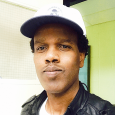Sign in to follow this
Followers
0

History is made. Abdi Warsame wins Minneapolis City Council seat
By
Libaax-Sankataabte, in
General

By
Libaax-Sankataabte, in
General